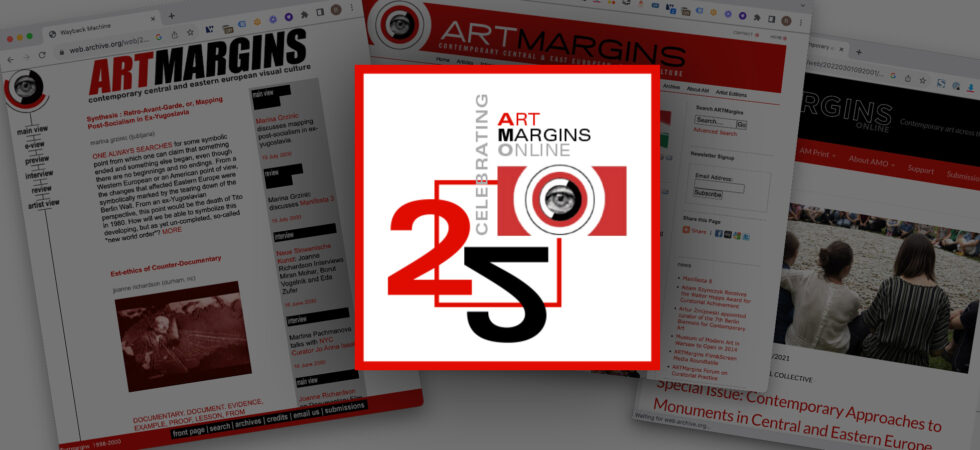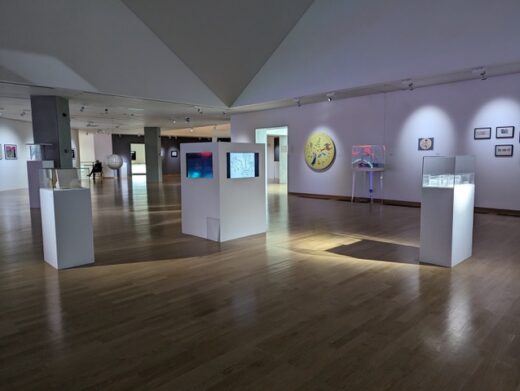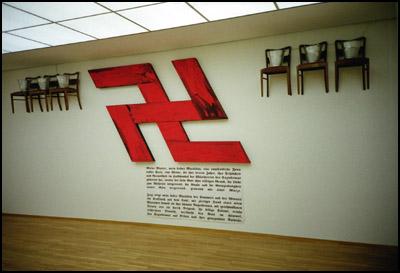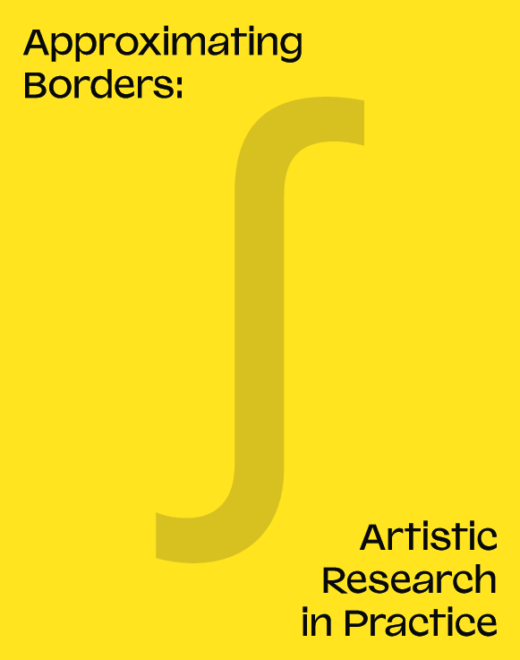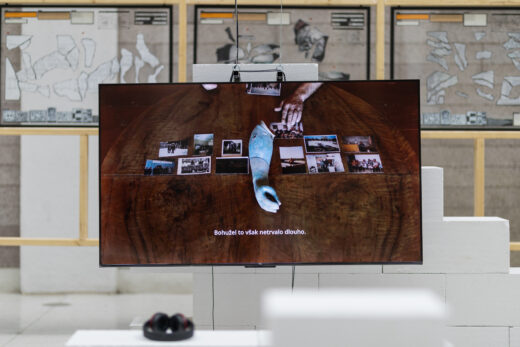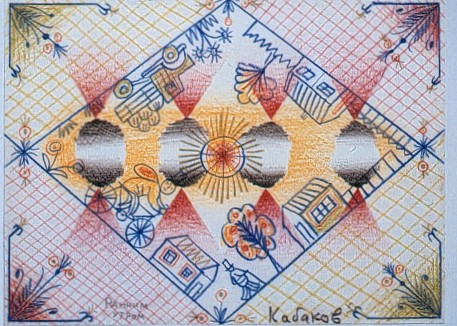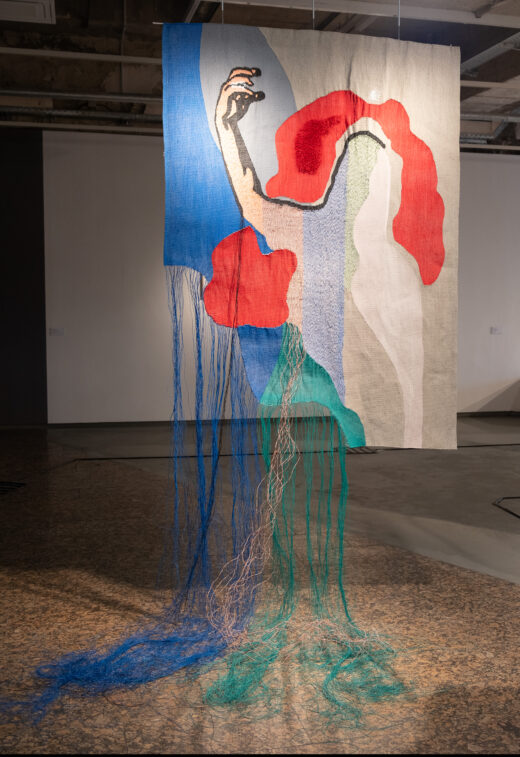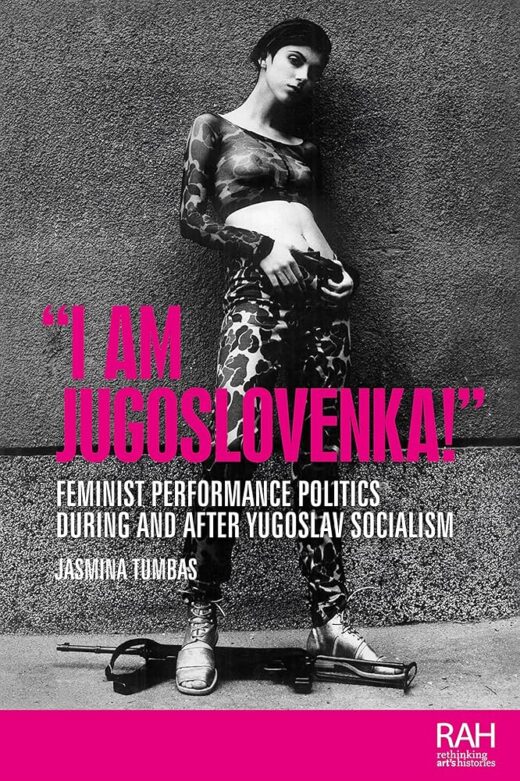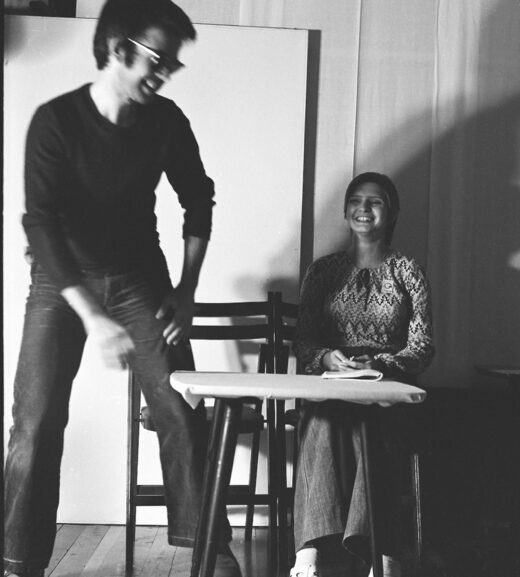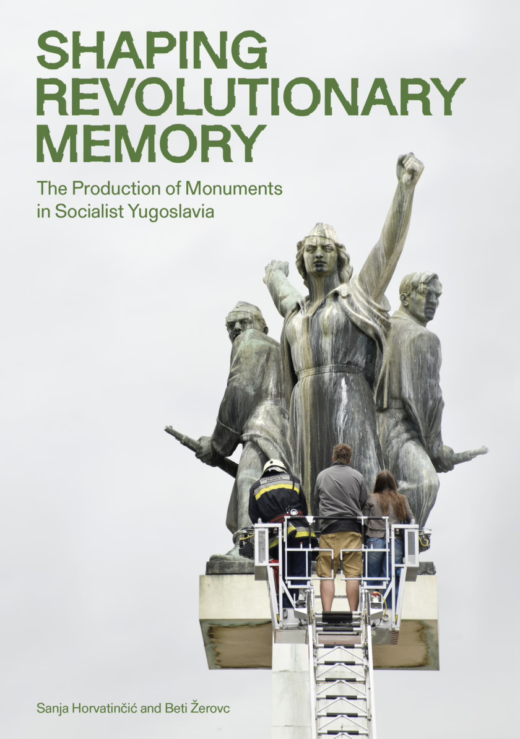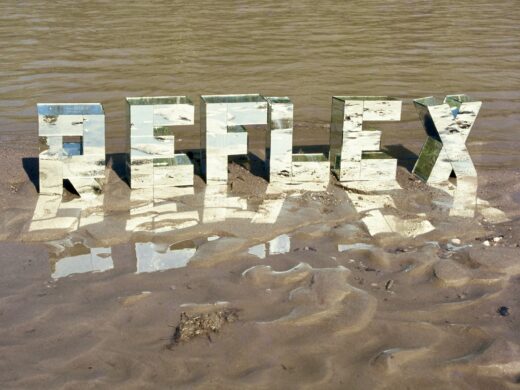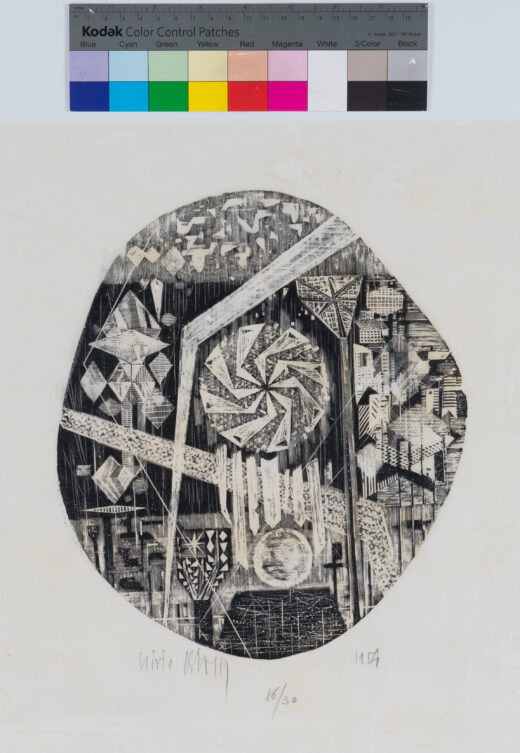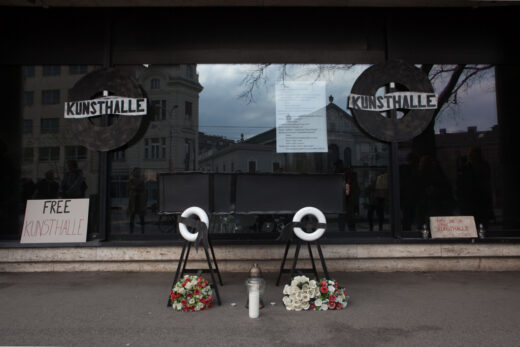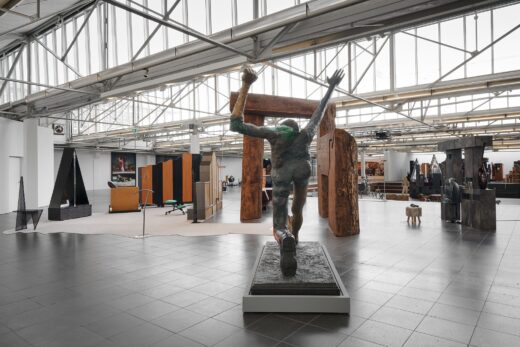ARTMargins (original) (raw)
ARTM Online Content
ARTMargins Online Celebrates 25 Years!
ARTMargins Online (AMO) published its first article on January 15, 1999, an interview with art critic and theorist Boris Groys by AMO founding editor Sven Spieker. Since then we’ve published nearly a thousand essays, reviews, interviews, podcasts, and critical texts exploring postwar and contemporary art from East Central Europe in a global context.
Throughout this year, we’ll be reflecting on these 25 years by inviting our authors to delve into the AMO archive to explore perspectives that can illuminate our present, and by organizing conversations involving artists, critics, curators, and researchers from Eastern Europe and beyond to reflect on the … Read more
Horizontal Art History and Beyond: Revisiting Peripheral Critical Practices
Agata Jakubowska and Magdalena Radomska, eds., Horizontal Art History and Beyond: Revisiting Peripheral Critical Practices (New York and London: Routledge, 2023), 223 pp.
Piotr Piotrowski (1952–2015) continues to be regarded as one of the most significant figures in the art history of modern and contemporary art in Eastern Europe. Piotrowski’s work has not only influenced his Polish colleagues. His international activities and translations of his texts have ensured that he remains one of the few art historians from Eastern Europe known to experts beyond the borders of the region. His book In the Shadow of Yalta, published in English … Read more
The Outsider: Vladan Radovanović at Belgrade’s Museum of Contemporary Art
Vladan Radovanović: Ahead of his Time and Beyond / Vladan Radovanović: Ispred vremena i izvan, Museum of Contemporary Art, Belgrade, March 28 – September 10, 2024
Ours is an age of inclusive, pluralistic categories. For the discipline of art history, this is evident in the commonplace use of terms like modernisms and global contemporary art. Capacious and limitless, these terms seek to dispel myths of quality and canonicity, to flatten hierarchies between centers and peripheries, and to resolve asymmetries between the local and the global with little more than the use of a prefix or a plural. The retrospective exhibition, … Read more
Vernacular Modernisms, or Art in Spite of All
IN THE EYE OF THE STORM: MODERNISM IN UKRAINE, 1900-1930S, THYSSEN-BORNEMISZA NATIONAL MUSEUM, MADRID, SPAIN; MUSEUM LUDWIG, COLOGNE; THE ROYAL MUSEUMS OF FINE ARTS OF BELGIUM, BRUSSELS; THE BELVEDERE, VIENNA; THE ROYAL ACADEMY OF ARTS, LONDON; NOVEMBER 29, 2022-MAY 2, 2023
Visiting a modern art exhibition from Ukraine at this critical juncture is an uncanny experience. The modernist undertaking of the early twentieth century vividly demonstrates parallels between Ukraine’s historical quest for independence and the country’s current resistance against Russian aggression, which began in 2014 and escalated into a full-scale war in 2022. _In the Eye of the Storm_… Read more
Snapshot Dialogue: Boris Kostadinov (Berlin) and Kamen Stoyanov (Vienna/Sofia)
As part of its 25th Anniversary Celebrations, ARTMargins Online hosts a series of short dialogues between critics and curators from Eastern Europe and one or several artists. With this series of conversations, we want to shed light on the challenging political and economic conditions under which artists and other producers of culture in the region operate today, yet we also aim to highlight the amazing vibrancy, resilience, and resourcefulness of its art scenes. We begin the series with a conversation between Berlin-based curator Boris Kostadinov and Kamen Stoyanov (Vienna and Sofia). The conversation was recorded in Vienna on September 13, … Read more
25th Anniversary Reflections: East of Art, Transformations in Eastern Europe: “What Comes After the Wall?” by Bojana Pejić, 2003
ARTMargins Online is celebrating 25 years! To mark the occasion, the editors invited past ARTMargins Online authors and other writers from the region to select one article from AMO’s online archive of more than 1000 texts, providing a brief introduction that highlights the chosen item’s continued relevance. ARTMargins Online published its first article on January 15, 1999. Today, the publication is one of the largest online archival resources for contemporary art from East-Central Europe and beyond. Our reflection project celebrates AMO’s 25 years, but it also aims to highlight our unwavering commitment to promoting research, criticism, and artistic projects that … Read more
Approximating Borders: Artistic Research in Practice
Ádám Albert, Eszter Lázár, Dániel Máté, Edina Nagy (eds.), Approximating Boarders: Artistic Research in Practice (Budapest: Hungarian University of Fine Art, 2023) 223 pp.
The question of knowledge resonates throughout human history. There have been many attempts to define it across philosophy, art, and science, but one cannot find an ultimate agreement upon the meaning of the term. We could cite innumerable perspectives and ideas about knowledge—from Descartes to Adorno in philosophy, to quite rigid and strict rules from natural science—but this would testify only to the diversity of ideas associated with “knowledge.” In the capitalist system, knowledge is a … Read more
25th Anniversary Reflections: From Biopolitics to Necropolitics: A Look Back at Marina Gržinić’s Interview with Maja and Reuben Fowkes, 2012
ARTMargins Online is celebrating 25 years! To mark the occasion, the editors invited past ARTMargins Online authors and other writers from the region to select one article from AMO’s online archive of more than 1000 texts, providing a brief introduction that highlights the chosen item’s continued relevance. ARTMargins Online published its first article on January 15, 1999. Today, the publication is one of the largest online archival resources for contemporary art from East-Central Europe and beyond. Our reflection project celebrates AMO’s 25 years, but it also aims to highlight our unwavering commitment to promoting research, criticism, and artistic projects that … Read more
Grafting Solidarities – From the Factories to the Fields
Matter of Art Biennial 2024, Prague, June 14 – September 29, 2024
Six years ago, the Czech section of the Tranzit network launched a new art biennial in Prague titled Matter of Art, currently in its third edition. In contemporary times, nearly every major city hosts biennials to foster local cultural vitality, generate tourism, and enhance the city’s international perception and influence. Each new initiative sparks inquiries into its objectives, content, and audience, at home and globally. This constant self-reflection is especially crucial for biennials in East Central Europe—such as the Biennale Warszawa, Kyiv Biennial, OFF-Biennale Budapest, and Survival … Read more
25th Anniversary Reflections: Roundtable “Arts Publishing in Eastern Europe in Times of Crisis” (ARTMargins Online Editors), 2022
ARTMargins Online is celebrating 25 years! To mark the occasion, the editors invited past ARTMargins Online authors and other writers from the region to select one article from AMO’s online archive of more than 1000 texts, providing a brief introduction that highlights the chosen item’s continued relevance. ARTMargins Online published its first article on January 15, 1999. Today, the publication is one of the largest online archival resources for contemporary art from East-Central Europe and beyond. Our reflection project celebrates AMO’s 25 years, but it also aims to highlight our unwavering commitment to promoting research, criticism, and artistic projects that … Read more
25th Anniversary Reflections: Roundtable “Central and East European Art and Culture, 1945-Present” (ed. Susan Snodgrass), 2001
ARTMargins Online is celebrating 25 years! To mark the occasion, the editors invited past ARTMargins Online authors and other writers from the region to select one article from AMO’s online archive of more than 1000 texts, providing a brief introduction that highlights the chosen item’s continued relevance. ARTMargins Online published its first article on January 15, 1999. Today, the publication is one of the largest online archival resources for contemporary art from East-Central Europe and beyond. Our reflection project celebrates AMO’s 25 years, but it also aims to highlight our unwavering commitment to promoting research, criticism, and artistic projects that … Read more
“Ende statt Wende”: Ruth Wolf-Rehfeldt’s Typewritings and the Critique of German Reunification
When checking the mail in either of the two Germanys in February 1990, one might have expected to find the usual mixture of bills and junk, as well as personal correspondence and official letters. More unusually, the mailbox might have contained an SOS message: “This is a cry for help!” Written as a plea for support, notably in English, this short text called on individuals to write to the parliamentary bodies of the German Democratic Republic (GDR) and Federal Republic of Germany (FRG), and decried the destruction of “social circumstances and rights” in the GDR. This distress signal had been … Read more
The Aesthetics of Economic Migration: nGbK’s Gastarbeiter 2.0 Exhibition
Gastarbeiter 2.0: Arbeit means Rad, at nGbK Berlin, April 13 – June 16, 2024
Jelena Fužinato’s mobile structure Builder’s Daughter: Everything is Peachy stands at the entrance to Gastarbeiter 2.0: Arbeit means Rad, an ambitious new exhibition hosted by the Neue Gesellschaft für bildende Kunst (nGbK). Composed from the same gleaming chrome as all of the installations in the exhibition, the piece takes the form of scaffolding holding a landscape painting of the artist’s home in Prijedor (Bosnia and Herzegovina), which was assembled with the help of a group of hired workers. Able to be freely moved around the … Read more
Jugoslovenka as an Act of Resistance
Jasmina Tumbas, I am Jugoslovenka! Feminist performance politics during and after Yugoslav Socialism (Manchester: Manchester University Press, 2022), 344 pp.
Reading the first chapter of Jasmina Tumbas’ publication I am Jugoslovenka! made me smile and think of my mother. The author cites Bojana Pejić talking about wearing original Levi’s jeans. My mother grew up in socialist—explicitly not communist—Poland, and moved to the Netherlands in the 1980s, when she was in her twenties. When I bought my first pair of jeans, she told me she got her first pair from Yugoslavia, where Western commodities were so much easier to obtain. Through … Read more
Multiple Realities: Experimental Art in the Eastern Bloc 1960s-1980s
Multiple Realities: Experimental Art in the Eastern Bloc 1960s-1980s, at Walker Art Center, November 11, 2023 – March 10, 2024; Phoenix Art Museum, April 17, 2024 – September 15, 2024; and Vancouver Art Gallery, December 14, 2024 – April 21, 2025
Thirty-two years after the collapse of the Soviet Union, the exhibition Multiple Realities offers a geographically expansive introduction to the creative autonomy that existed behind the Iron Curtain. To the average—which is to say non-specialist—viewer, Multiple Realities provides an intelligible, though not altogether nuanced, view of the Cold War East as a space ruled by ideological inflexibility. Nevertheless, … Read more
Ricochets: Ukrainian Solidarity and Resilience at the 60th Biennale di Venezia
The war in Ukraine continues to loom large at this edition of the Venice Biennale, as it did at the last, though now the nightmare unfolds in parallel with the heavily mediatized Israel-Hamas war. The city’s walls are plastered with red fly posters advertising directions to the “Nearest Bomb Shelter,” which, as a map shows, is located not far from the Ukrainian pavilion. This information vies for pedestrians’ attention with the “No Genocide Pavilion” Palestinian solidarity posters. An exhibition has been mounted in the Israeli pavilion, but a sign informs visitors that this will remain closed pending the release of … Read more
“Being Together”: the Meeting of Mail-Artists at the F-Art Festival in Gdańsk, 1975
1975 marked the changing field of neo-avant-garde practice in Poland in which a popularization and consolidation of the mail art scene brought to the fore the significance of networked art, particularly in its capacity to foster international exchanges and meetings. In the first half of the decade contact became an important feature of conceptual art and neo-avant-garde art in the region, both as a subject of art and as a practice. The following analysis of artistic events and undertakings in 1975 proposes this year as a watershed moment in the development of networked art in the region and re-thinking how … Read more
Shaping Revolutionary Memory: The Production of Monuments in Socialist Yugoslavia
Sanja Horvatinčić and Beti Žerovc, eds., Shaping Revolutionary Memory: The Production of Monuments in Socialist Yugoslavia (Berlin: Archive Books, 2023), 424 pp.
Maybe they never really left the public consciousness, but monuments have been at the front of public discussions in the last decade. Despite major world events such as a pandemic and several wars erupting – or possibly precisely because of these major events – there has been significant attention paid to our relationship with public monuments. The so-called “statue wars” in the US and UK of recent years are one example.(Statue wars have been covered in AMO … Read more
Print Content / Volume 13, Issue 2
— 06/01/2024
Subscription Required © 2024 ARTMargins and the Massachusetts Institute of Technology
by Małgorzata Kaźmierczak ·
“Real Time Story Telling”: A Performance-Art Festival in the Context of International Networks during the Transitional Period in Poland before and after 1989
The article explains the situation of performance artists in Poland during the transition period before and after 1989. Then it focuses on the first large performance art festival in Poland after 1989, Real Time Story Telling. It was organized in Sopot and Gdańsk in 1991 by Galeria Działań and curated by the outstanding artist and art theorist Jan Świdziński. The article explains the idea of the festival and briefly describes the curatorial activity of the invited international performance artists. The article also outlines the international network of connections between performance art festivals, which depended on the personal relationships between artists … Read more
Print Content / Volume 13, Issue 2
— 06/01/2024
Subscription Required © 2024 ARTMargins and the Massachusetts Institute of Technology
by André Keiji Kunigami ·
The Problem with Film: Murayama Tomoyoshi’s Variations on the Visible
The article explores the film theory written by the Japanese avant-garde artist Murayama Tomoyoshi (1901–1977). Murayama authored a robust yet understudied body of film writing, in the 1920s and 1930s. Although he had a prolific and stable activity related to film—in criticism, theory, screenplays, and even directing—he held an ambivalent opinion about the medium. For him, film could never fulfill art’s political task due to what he saw as the ontological restrictions of the medium: its supposedly incorporeal and incessant display of images. However, he kept repeatedly returning to film, based on the fascination with a certain vitality that he … Read more
Constellational Modernisms: “Socialist Humanism” and “Contextual Art” in Ion Bitzan and Wanda Mihuleac’s Graphic Art of the 1970s
Art exhibitions acted as facilitators of transnational encounters among artists during the Cold War. This article analyzes the emergence and local circulation of two art critical concepts which described adaptations of art practices and techniques associated with Pop art and conceptual art in Romanian graphic arts of the 1970s as an expanded artistic medium. Focusing on the way Romanian artists Ion Bitzan and Wanda Mihuleac adjusted their experimental art practices to suit different audiences in state-supported exhibitions such as the Romanian Pavilions in Venice or the Ljubljana Graphic Arts Biennale, as well as in other large-scale exhibitions organized in Romania … Read more
Developmental Dilemmas
Three recent volumes on the economic, infrastructural, and international networks of modernism reveal the extent to which notions of development have shaped the trajectory of modernist art practice outside the Western world, and Sarah-Neel Smith’s Metrics of Modernity: Art and Development in Postwar Turkey (2022) considers how efforts by the Turkish state to join the new global political economy in the 1950s prompted artists and art administrators to synthesize the language of economic development into artistic discourse and institutional infrastructure. Devika Singh’s International Departures: Art in India After Independence (2024) situates modernist artistic practice in India in the Nehruvian decades, … Read more
Militant Mappings: A Template Toolkit
The rise of Duterte’s authoritarian regime, and a series of violent dispersals to peasant-led mobilizations, prompted counter-mapping workshops in protest camps and rural communities. These workshops evolved out of the need to gather and visualize shared experiences and collective aspirations of the basic sectors-peasants, indigenous groups, and workers-who bear the brunt of oppression in a neocolonial society such as that of the Philippines. Additionally, these mapping sessions have become a potent method in exposing rights abuses, land grabbing, extractive industries, development aggression and other forms of violence perpetrated by centralized bodies. Moreover, the goal of the workshop is to find … Read more
Modern Art, Indigeneity, and Nationalism in Paraguay: An Introduction to Josefina Plá’s “Ñandutí Crossroads of Two Worlds”
This article introduces the first translation of the text “Ñandutí: Crossroads of Two Worlds” by Josefina Plá, pioneer of Paraguayan art and literature. The text offers an overview of this figure’s life and politics, in the context of the development of Paraguayan modernism in the 1950s and in the early years of General Alfredo Stroessner’s military dictatorship (1954–1989). Particularly, I address her involvement in the First Week of Paraguayan Modern Art as co-founder of the Arte Nuevo group and the close relationship with peers like Olga Blinder and Livio Abramo. Plá’s historical study of Ñandutí – lace is typically made … Read more
Ñandutí: Crossroads of Two Worlds: The Lineage and Magic of Ñandutí
This article introduces the first translation of the text “Ñandutí: Crossroads of Two Worlds” by Josefina Plá, pioneer of Paraguayan art and literature. The text offers an overview of this figure’s life and politics, in the context of the development of Paraguayan modernism in the 1950s and in the early years of General Alfredo Stroessner’s military dictatorship (1954–1989). Particularly, I address her involvement in the First Week of Paraguayan Modern Art as co-founder of the Arte Nuevo group and the close relationship with peers like Olga Blinder and Livio Abramo. Plá’s historical study of Ñandutí – lace is typically made … Read more
Some Notes on Transnational Art History in Practice: Revolutionary Romances? Global Art Histories in the GDR at the Albertinum
Revolutionary Romances? Global Art Histories in the GDR at Albertinum, Staatliche Kunstsammlungen Dresden, November 4, 2023–June 2, 2024
A decolonial discourse that has materialized in exhibition practices in recent years has set us on a course of unlearning and exploring potentially lesser-known histories. The exhibition Revolutionary Romances? Global Art Histories in the GDR at the Albertinum in Dresden (November 4, 2023–June 2, 2024) shows that we still have much to learn about the histories and forgotten cultural heritage of the Cold War. With two hundred historical art objects, most of them from the Dresden State Art Collections (Staatliche Kunstsammlungen Dresden, … Read more
Practicing Solidarity in Slovakia: The Story of Kunsthalle Bratislava
Since the beginning of its mandate, the newly elected (2023) Slovak government has been spreading discriminatory, homophobic, and xenophobic narratives, and proposing new policies, usually without any public debate or negotiations with the professional public. The new Minister of Culture is Martina Šimkovičová from the Slovak National Party (SNS), who formerly worked at the private television station Markíza (from which she was fired after her hateful comments against refugees on social media in 2015).(Tomáš Kyseľ, “Z Markízy ju vyhodili, Pellegrini s ňou mal problém a médiám sa už teraz vyhráža. Kto je Martina Šimkovičová,” Aktuality.sk, October 17, 2023, https://www.aktuality.sk/clanok/yc6re50/z-markizy-ju-vyhodili-pellegrini-s-nou-mal-problem-a-mediam-sa-uz-teraz-vyhraza-kto-je-martina-simkovicova/… Read more
In and Out of the Box: Leaps in East/East Dialogues Through the Transnational Activities of Constantin Flondor
A short glance at the East/East dialogues within the timeline of Romanian art of the 1970s and 1980s allows us to identify existing (in)formal cross-border exchanges which foregrounded geopolitical alliances and sporadically connected Romanian artists with like-minded spirits. In the artistic context of the 1970s and 1980s, the state institutions were responsible for foreign cultural agreements and the organization of research trips and touring exhibitions, as well as establishing cultural cooperation with other socialist countries. The assumption that traveling within the Bloc was possible without much difficulty does not always hold true since opportunities were mostly accessible to artists and … Read more
Re/Opening the DAAD Archives
IF THE BERLIN WIND BLOWS MY FLAG: ART AND INTERNATIONALISM BEFORE THE FALL OF THE BERLIN WALL AT DAADGALERIE, N.B.K., AND GALERIE IM KÖRNERPARK, SEPTEMBER 9, 2023 – JANUARY 14, 2024
The exact aim of the large-scale, three-site exhibition, When the Berlin Wind Blows My Flag: Art and Internationalism Before the Fall of the Berlin Wall, is difficult to define. The first sentence of the exhibition’s introductory text promised to offer insight “into the history of the DAAD Artists-in-Berlin Program (Berliner Künstlerprogramm—BKP)” and through that “the art scene in West Berlin before the Wall came down.” Based on this promise, … Read more
Photography: The Lingua Franca of Performance Art?
As Michelle Henning points out in her book Photography: The Unfettered Image (2018), “from its inception, photography was a means to set images free, to allow them to go traveling, to transfer, to be projected, translated, fragmented, reconstituted and reversed, to be reimagined and re-embodied.”(Michelle Henning, Photography: The Unfettered Image (New York: Routledge, 2018), p. xi.) How does this perspective contribute to understanding the medium beyond its treatment in art museums, which usually emphasize uniqueness and authorship? How does highlighting the concept of images as “migratory, journeying, wandering and vagabond”(Henning, p. 8.) alter our approach towards … Read more
Personal Witnesses
Illiberal Lives, at Ludwig Forum Aachen, April 22, 2023 – September 10, 2023
The group exhibition Illiberal Lives contributes to a rich and provocative debate on art both as a subject and object of liberal market logic. It is curated by Eva Birkenstock, Anselm Franke, Holger Otten and Kerstin Stakemeier, with works by Pauline Curnier Jardin, Johanna Hedva, Ho Rui An, Blaise Kirschner, Jota Mombaça, Henrike Naumann, Melika Ngombe Kolongo, Bassem Saad, Mikołaj Sobczak, and Jordan Strafer. A unique aspect of this exhibition is that the artists, alongside the curators, have worked with the permanent collection and selected works that … Read more
